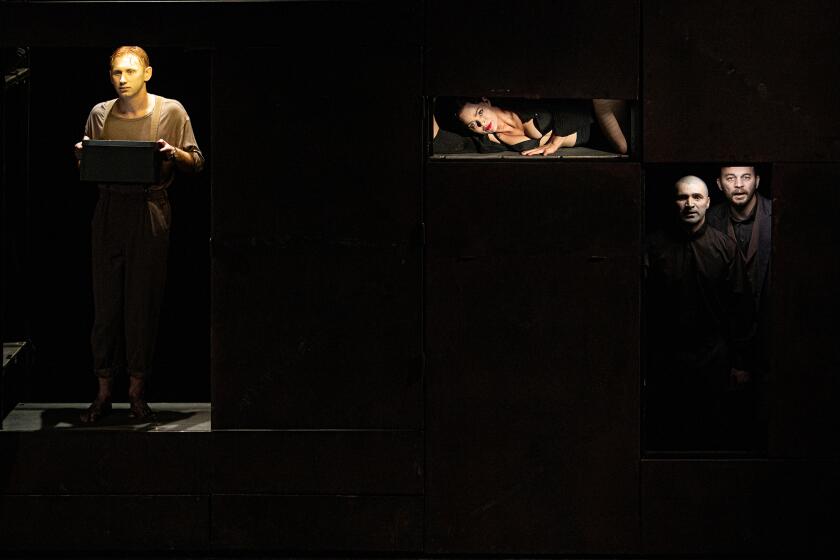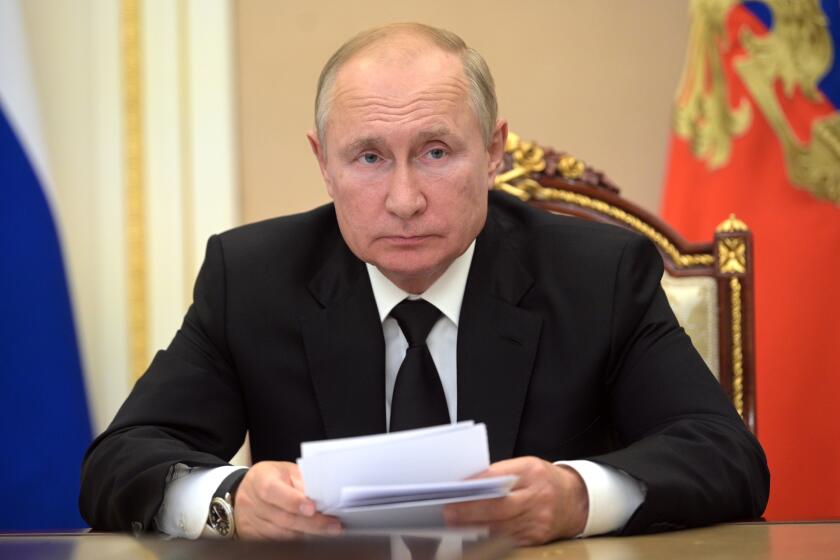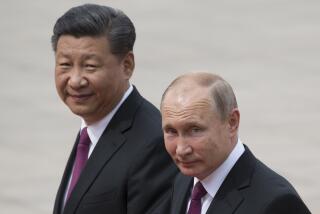Super spy or paper pusher? How Putin’s KGB years in East Germany helped shape him

- Share via
DRESDEN, Germany — Meticulous. Reticent. Clever, but never showy about it. Ever the watcher.
It was 1989. The young Vladimir Vladimirovich Putin was a KGB officer in the then-East German city of Dresden, and it was one of history’s pivotal moments.
The Berlin Wall had fallen. The repressive government of one of the Soviet Union’s most prized satellite states was collapsing, a prelude to the dissolution of the U.S.S.R. itself. The reunification of East and West Germany was just months away.
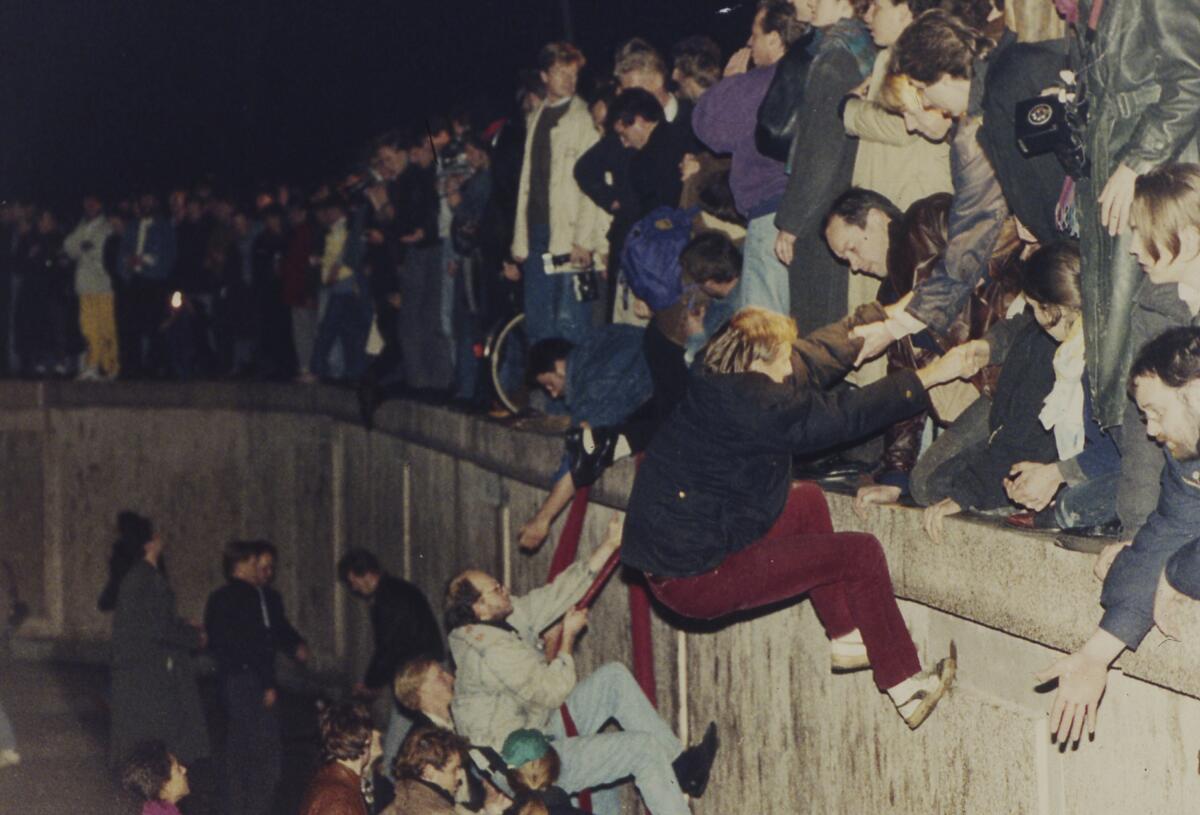
Putin’s five-year sojourn in Dresden, which abruptly ended in 1990, has come under renewed scrutiny as the 70-year-old Russian president prosecutes an increasingly brutal and bloody war in Ukraine — a neighboring sovereign state that for the last 16 months has fiercely resisted a total Russian takeover.
Against that backdrop, analysts point to the lingering legacy of Putin’s Dresden years: His determination never to allow domestic dissent to turn to a tidal surge like the one he witnessed. The realization that even a powerful elite wielding a ruthless police apparatus could suddenly find itself vulnerable. His grievance-laced dreams of a Russian empire greater than the one that slipped away before his eyes.
“It was an important time in his life,” said Douglas Selvage, a historian who works at the main Berlin archive of the Stasi, the onetime East German secret police. “It probably contributed to his sense of how everything could fall apart.”
But Selvage also said the Dresden interlude had been romanticized and mythologized — not least by Russian media, abetted by Putin himself.
“A lot of legends,” Selvage said, “have grown out of that time.”
::
The villa at #4 Angelika Street, in a suburban district overlooking the River Elbe, housed the KGB’s Dresden headquarters. Today, surrounded by a wall and garden, it’s an office building owned by a German foundation; visitors are not welcome.
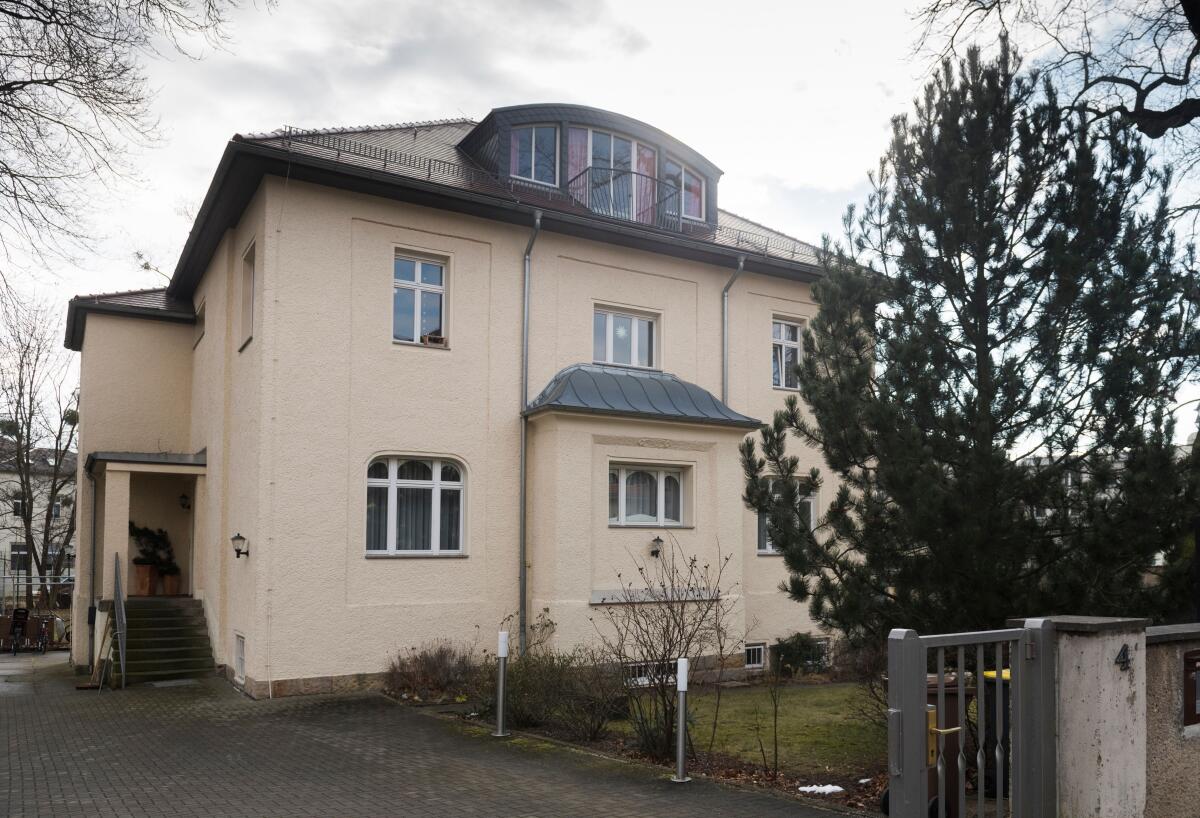
The opposite is true at the former Dresden Stasi headquarters, less than 100 yards away across a busy thoroughfare. The complex is now a museum and memorial to Stasi victims, with dank cellblocks and labyrinthine corridors carefully preserved, together with artifacts like paintings and poetry depicting the suffering of detainees.
“Putin would have been in and out of here all the time,” said Christine Buecher, who organizes events at the museum. “Those kinds of comings and goings were very much normal.”
In addition to attending meetings and ceremonial events, Putin probably would have frequented a Stasi canteen in the building, adjacent to a second-story cellblock. A typewritten menu from the late 1980s, kept by the museum, features comfort food like liverwurst and sauerkraut, or a Russian salad for 77 pfennigs — around 50 cents, if the East German currency had been convertible, which it was not.
In 2018, the discovery of a Stasi identity card issued to Putin caused a media sensation in Germany. It was found in the Dresden archives of the Ministry for State Security, as it was formally known. But there’s no evidence Putin was ever a Stasi operative, said historian Selvage.
Instead, he said, the card was probably issued because Putin and his colleagues were granted routine access to Stasi facilities that honeycombed Dresden. The two agencies had a sometimes-overlapping workload — trying, for example, to recruit international students at Dresden’s Technical University as informants.
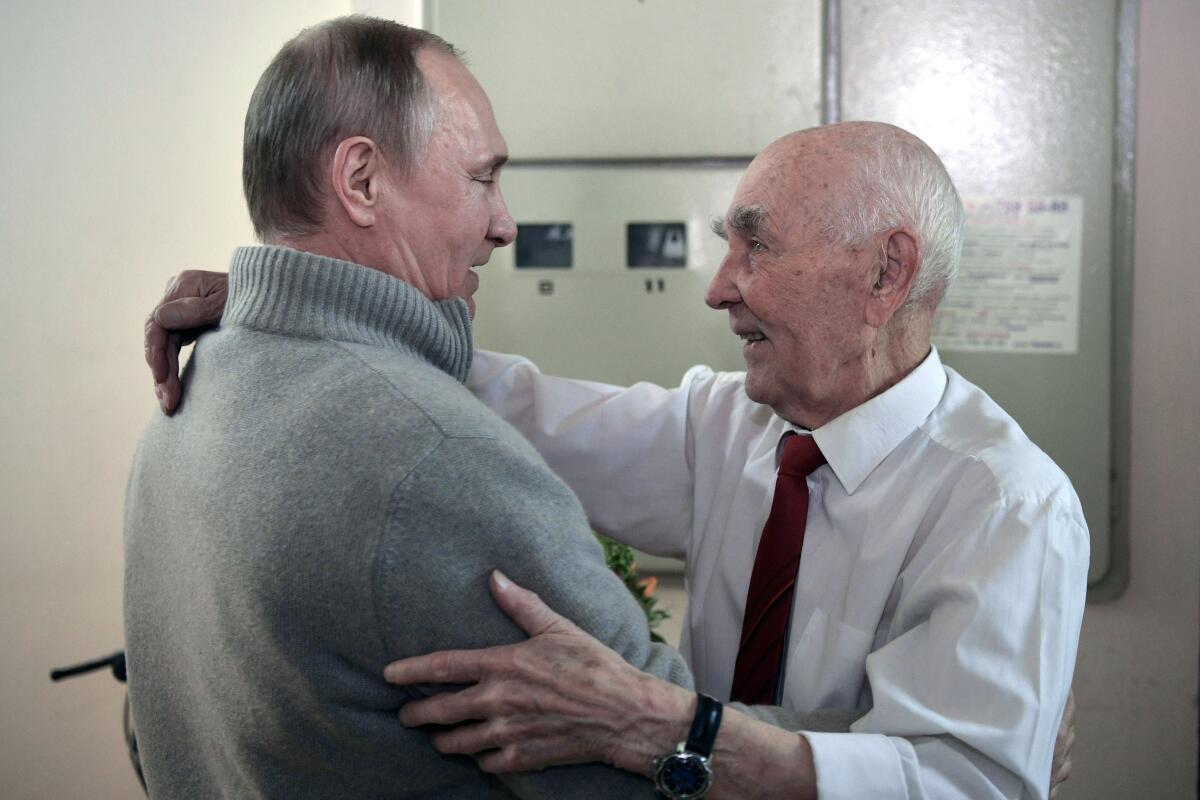
Like workers everywhere, Putin could appreciate a short commute. He and his family — Lyudmila, the wife he later divorced, and two small daughters, now grown — lived in a large multistory apartment complex a few minutes from the Angelika Street villa, reached via a parkland path.
It was a comfortable lifestyle for the young family, compared with the living standards of ordinary East Germans — though a Russian-language memoir later quoted Lyudmila as observing that Stasi employees, numerous among the neighbors, were usually assigned the bigger and nicer units.
When Putin and his family decamped from Dresden for the last time, they took with them, according to multiple accounts, a symbol of suburban plenty: a used washing machine, given to them by German friends.
The Ukrainian military’s surrender hotline, dubbed ‘I Want to Live,’ is enticing some Russian soldiers to quit the battlefield as the war drags on.
In an odd historic echo, invading Russian troops have so often looted washing machines from Ukrainian homes in occupied cities and towns that the household appliance quickly became a wartime meme — an emblem, to Ukrainians, of a foe that was terrifying and destructive, yet also somehow faintly ridiculous.
People living now in Putin’s old apartment complex take in stride the historic connection to a onetime nest of spies, and the notoriety that was to accrue to the onetime tenant.
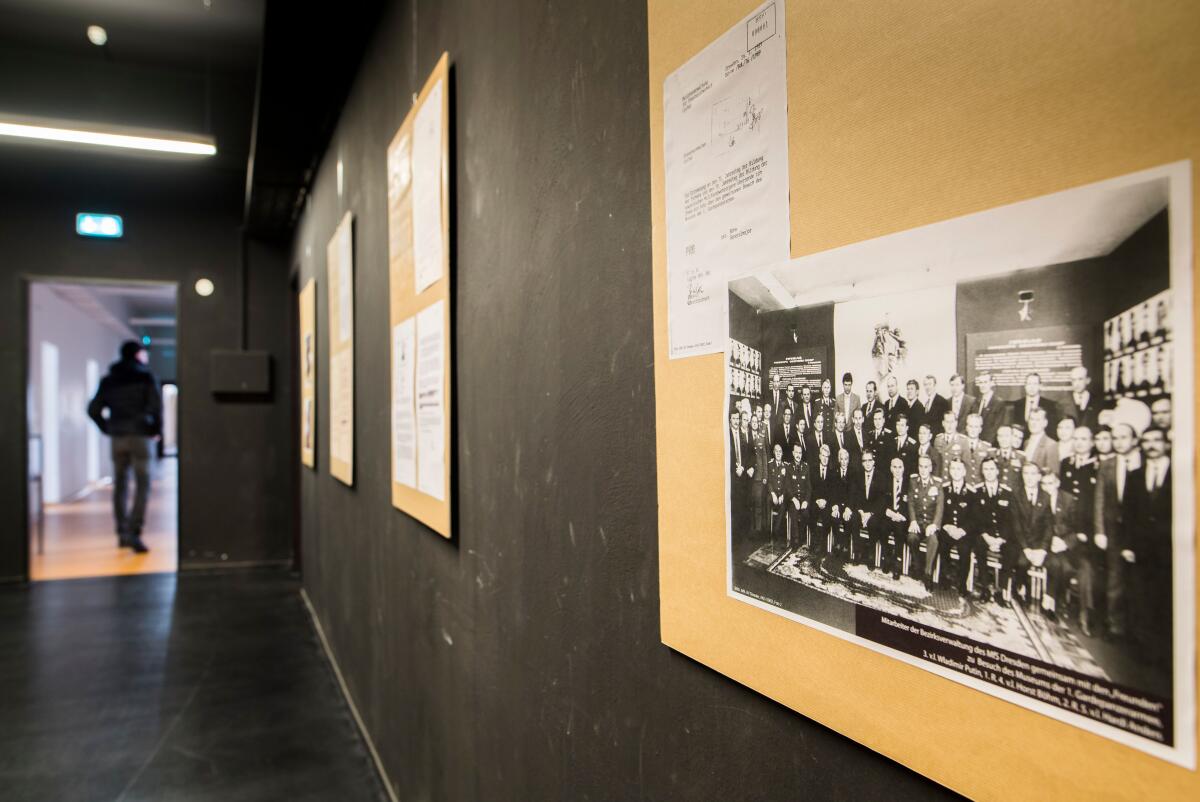
“Putin? He was the next block over!” called out a man who was leaning out his second-story window and washing it. Asked his thoughts about the Russian leader, he paused, shook his head and pulled the window firmly shut.
::
Was Putin some kind of super-spy, or more of a paper-pushing bureaucrat?
Over the years, German news reports, and some biographies, attributed various daring feats of espionage to the future Russian president. But some recent depictions are more in line with “The Office” than “The Americans” — tedious, repetitive workplace tasks as opposed to gripping espionage drama.
The German newsmagazine Der Spiegel this month published a deep-dive investigation casting doubt on accounts that Putin was assigned covert activities such as arming and advising the militant Red Army Faction across the border in West Germany.
Staging of ‘Caligula’ in the Ukrainian capital is cathartic for audience and cast alike. ‘Resonates in this moment,’ says actor who plays Roman despot.
“The literature is full of speculation about Hollywood-like special missions in which Putin is alleged to have been involved,” the article said. “Even today, there is no convincing evidence for these stories.”
The magazine even undercut one of the most widely repeated stories about Putin’s time in Dresden — his alleged personal confrontation with a small group of demonstrators who approached the villa on Dec. 5, 1989, after a crowd had stormed the Stasi headquarters.
Der Spiegel said there was no proof he was even there that night — but observers often cite the overrunning of the nearby Stasi building in explaining Putin’s visceral response even to peaceful demonstrations, such as Ukrainians’ pro-democracy protests in 2014.
While versions of tumultuous events in Dresden grow more contested with passing years, character studies of Putin drawn from contemporaries’ recollections tend to be more consistent. They paint a portrait of a young officer who was rarely the center of attention, but always kept careful track of those around him: a quick study, but a person who shrouded his capabilities. The one at the edge of the picture frame.
Putin biographer Masha Gessen called Putin “the man without a face,” alluding not only to his resolutely nondescript quality, but his canniness in using it to conceal sharp-edged ambition and deep-seated venality.
Gessen wrote that Putin was disappointed with a humdrum posting in Dresden, considered a backwater, but that then and later, his colorlessness served him well. Years afterward, as he ascended Russia’s political ranks, the lack of a distinctive public persona gave him another key advantage: the ability to craft an image of his own choosing.
Putin’s most prominent domestic critic, the imprisoned Alexei Navalny, said the seeds of cronyism and corruption were planted in Dresden, where Putin rubbed shoulders with figures who were later to become part of the Russian financial elite that propped him up politically. They included Sergei Chemezov, who went on to head Russia’s arms export agency, and Nikolai Tokarev, who would become chief of the Russian pipeline company Transneft.
“Putin failed to get rich or further his career in Dresden,” Navalny, who nearly died in a 2020 poisoning blamed on the Kremlin, said the following year in an investigative video. “But here he met people who became his main ‘wallets.’”
In Dresden, Putin defined his “life principles,” Navalny said: “First, always say one thing and do another — lies and hypocrisy are the most effective methods. Second, corruption is the basis of trust: Your closest friends are those who have been stealing and cheating alongside you for many years. And third, there is no such thing as too much money.”
For long after, Dresden would remain a touchstone. On a 2006 visit described as a homecoming of sorts, Putin dropped into a local cafe and viewed a landmark cathedral that had been wrecked in the Allied bombing of 1945, now newly rebuilt.
Such a visit, of course, would be impossible today. After the Russian president was indicted in March for war crimes by the International Criminal Court, Germany said he would be arrested if he set foot in the country.
::
As a teenage apprentice in Dresden, the Berlin-based artist Markus Draper, now 54, often passed by the house on Angelika Street. The pale-yellow villa came to loom large in his imagination.
Earlier this year, a well-known Berlin gallery mounted an installation by Draper featuring a hyper-realistic diorama of the historic villa. A filmstrip-style backdrop cycles through images and events of the Cold War, culminating in Putin’s Dresden interlude. The artwork was galvanized by the full-scale invasion of Ukraine, but Draper had toyed for years with the idea of looking at the origins of the Soviet empire’s unraveling, and the lessons Putin drew from it.
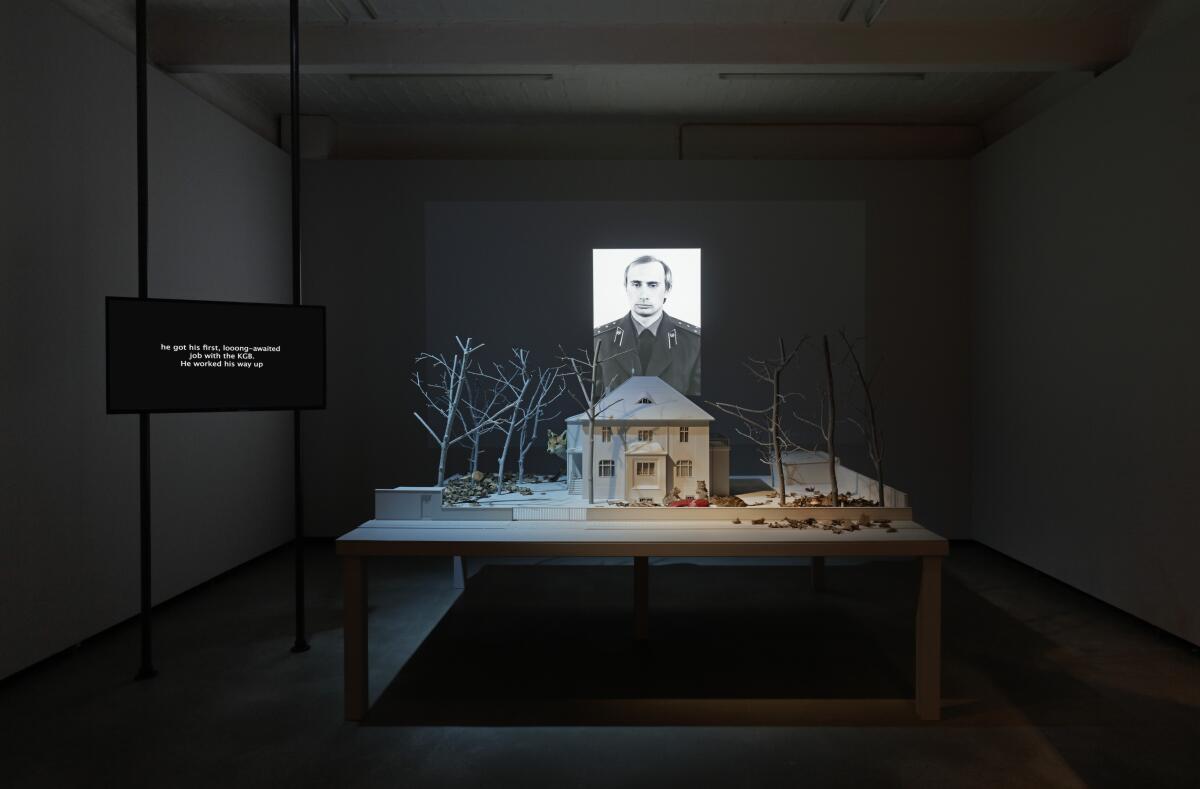
Draper called the KGB building a constant amid the Cold War intrigue that swirled around it and across the Soviet bloc. “To me,” he said, “it’s a kind of hinge, this house.”
Before the Berlin Wall fell in 1989, Draper had good reason to be nervous in the vicinity of Angelika Street. Still a teenager, he had begun to move in clandestine anti-government circles and was well aware of the long arm of the Stasi and the KGB.
“If I had been a little older, or the Wall had fallen later, I would almost certainly have gone to prison,” he said.
Draper’s installation, titled “The House Near a Deep Forest,” painstakingly rendered the KGB villa in miniature, surrounded by bare trees and seemingly snowy ground. Surreal elements encroach: a giant fox peers from behind the house, outsized rodents eye a hunk of raw meat in the yard.
An accompanying audio narrated by a fly on the wall — a nod, the artist said, to Putin likening anti-war Russians to annoying flying midges — is told in the manner of a dark fairy tale. But as with so many allegories, its meaning is many-layered.
Like many Germans who grew up in the former East, Draper expresses a measure of ambivalence about life in reunified Germany. Although happy to have escaped a lifetime in a police state, he is sometimes unsettled now, he said, by the casual cruelties and inequities of Western capitalism.
“Monsters are real, but created,” he said. “And history is a deep forest.”
::
If the future Russian president’s career and character were indelibly marked by his time in Dresden and witnessing East Germany’s fall, its aftermath may have helped foster some fundamental miscalculations on Putin’s part about Germany and the wider West as he prepared, decades later, to try to subdue Ukraine by force.
As his armies embarked on the full-scale invasion of February 2022, Putin seemingly believed that a transactional, pragmatic Germany would not meaningfully challenge him.
“Putin considered Germany too dependent on Russian energy, too weak militarily, and too business-minded to mount any significant resistance to his war,” analysts Liana Fix and Caroline Kapp wrote in a paper for the Council on Foreign Relations marking the war’s first anniversary. “He was wrong.”
And Germany, even more than other Western partners, for years misread the Russian leader, many analysts believe — thinking that his priority lay in reaping the economic benefits of cordial relations and that Putin would not act in a way to threaten those ties.
Putin arrest warrant: The International Criminal Court issues warrant for Russian president, alleging the abductions of children from Ukraine.
Putin’s rise to top leadership had come scarcely a decade after he and his family departed Dresden in 1990 for his native Leningrad, which was soon to revert to its pre-Communist name.
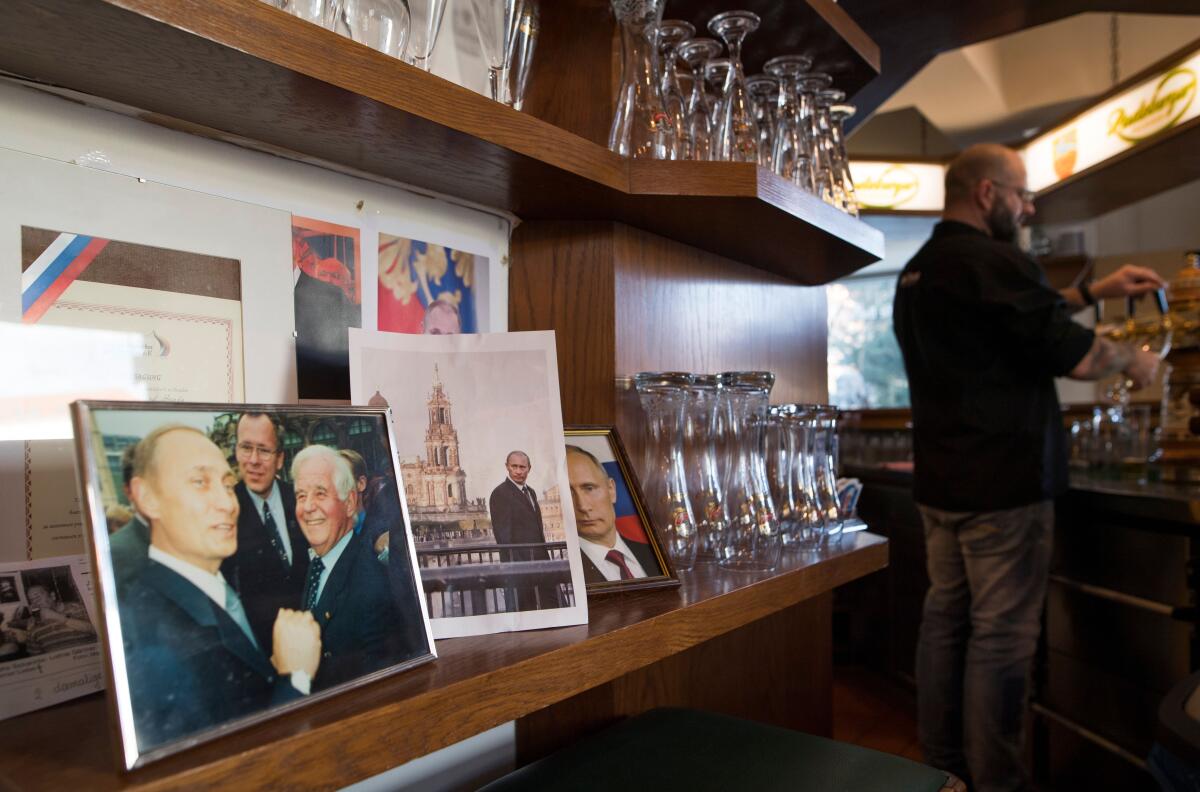
In St. Petersburg — an old royal city like Dresden, and like it a baroque riverside jewel where behind-the-scenes political machinations sometimes rivaled the import of events in a drab capital — his alliances soon set his climb in motion.
Acting president, who’s likely to win election, remains a mystery. The ex-spy has also managed to project himself as whatever Russians and foreigners alike want him to be.
He became an advisor to St. Petersburg’s mayor, climbing to the position of deputy mayor and head of a trade panel as billions of dollars were pouring into Russia from overseas. In 1996, he moved to Moscow and up the Kremlin ranks, and in 1998, then-President Boris Yeltsin appointed him head of the KGB’s domestic successor, the FSB. The next year, Yeltsin tapped him as prime minister, a way station to the presidency.
Amid Putin’s seeming desire for rapprochement with the West, though, there were menacing signs.
In 2001, the year after he assumed the Russian presidency, Putin addressed the German Bundestag, or parliament, in proficient German — the first such appearance by a Russian head of state.
Martin Aust, a professor of East European history and culture at the University of Bonn, recalled Putin’s conciliatory language about a common European home — but also a strident defense of the scorched-earth Russian military campaign in the breakaway republic of Chechnya, which now seems like an ominous prelude to the destruction of Ukrainian cities and the targeting of civilians.
“Everybody was so impressed by the Russian president speaking German that nobody wanted to really pay attention to other things he said,” said Aust.
“People heard what they wanted to hear,” he said. “And now we are paying the price.”
More to Read
Sign up for Essential California
The most important California stories and recommendations in your inbox every morning.
You may occasionally receive promotional content from the Los Angeles Times.

